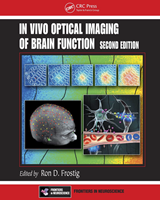From: Chapter 15, Fast Optical Signals: Principles, Methods, and Experimental Results

NCBI Bookshelf. A service of the National Library of Medicine, National Institutes of Health.
EROS recorded from medial occipital areas during two visual stimulation experiments using the same paradigm [1,61]. (A) Diagram of the stimulation conditions. The stimulation consisted of reversals of black-and-white grids occurring every 500 ms; only one quadrant of the visual field was stimulated during a trial block, and the stimulated quadrant was rotated across blocks. The head diagram represents the predicted location of the response, based on a contralateral, inverted representation of the visual field in medial occipital areas. (Modified from Gratton, G., and Fabiani, M. Psychophysiology, 40, 561, 2003. With permission.) (B,C) EROS effects in the two experiments. In both experiments, the thicker lines refer to the EROS activity recorded from predicted locations for each quadrant stimulation conditions, and the thinner lines refer to the EROS activity recorded from the same locations when the other quadrants were stimulated. ([B] From Gratton, G. et al. Psychophysiology, 32, 505, 1995. [C] From Gratton, G., and Fabiani, M. Psychophysiology, 40, 561, 2003. Both with permission.) The second experiment (lower panel) was based on a larger data sample and had a higher sampling rate than the first experiment (upper panel).
From: Chapter 15, Fast Optical Signals: Principles, Methods, and Experimental Results

NCBI Bookshelf. A service of the National Library of Medicine, National Institutes of Health.